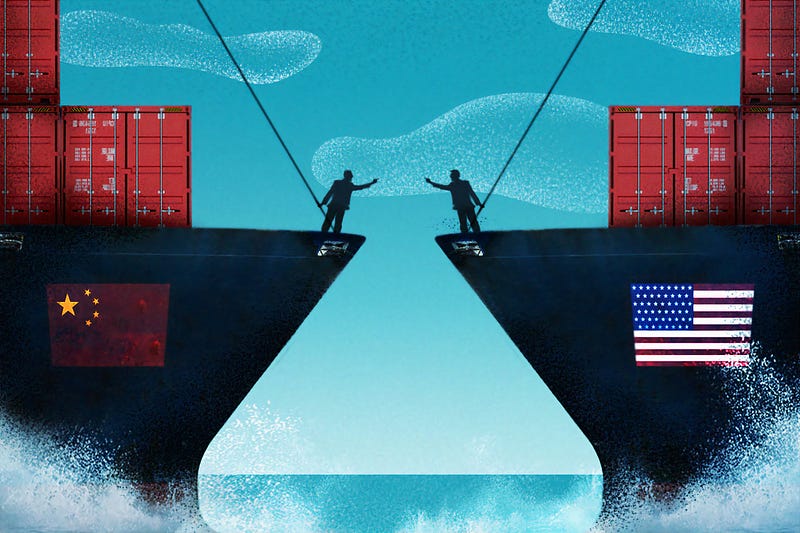A Discussion of “When Do Capital Inflow Surges End in Tears?”
Post World War II the “Powers that Be” set about building an economically interdependent global world order, governed by institutions like the IMF, the WTO and the World Bank, with the intention of preventing future global wars. If a war hurt your economic interests, then maybe it would not happen.
But economic interdependence comes with a cost — financial contagion. If one economy has a downturn, it can pull down others.
Time has shown countries grow when they are open to each other for trade and investment. But then that also means they can be hurt if the trade or investment falls off. A particularly bad downturn is called a financial crisis.
Even the best run economy can fall prey to large amounts of foreign capital coming in, which is a desirable source of investment, because it leaves them vulnerable to capital flight — the sudden withdrawal of that foreign capital.
Since the 1980s, these surge cycles, an increase in foreign capital flows followed by a matching decrease, has hit many economies around the world. The East Asian crisis in the 1990s is one such example.
The financial crisis started in Indonesia after a bank declared insolvency. Investors pulled money from Indonesia and then from all countries in the region, whether they had similar economic issues as Indonesia or not.
This capital flight caused otherwise sound economies sudden, sharp recessions. Roughly $90B went into East Asia in 1996, $60B was pulled out in 1997, and another $55B in 1998.
Emerging economies live in this tension — the desire to encourage foreign inflows that can lead to investments that grow their economy — but then that very same money can disappear so fast your economy fails overnight.
What Can Be Done
Economists strive to understand what causes financial crises with the hope of avoiding them, or, failing that, lessening their impact. The truth is they tend to vary so much in causes, triggers, and manifestations, it has proven difficult to offer a clear answer.
That is the question the authors are facing. Ghosh, Ostry and Qureshi (2016) are asking: what policies can countries adopt while capital is flowing in to lessen the impact of a capital flight episode in the future?
Inspired by recent events like the Global Financial Crisis (2008) and the Taper Tantrum (2013 — when the Fed tried to reverse Quantitative Easing), the authors note the Emerging Market Economies (EME) are most vulnerable to swings in capital flows.
They look at 53 EMEs from 1980–2014 and classify 152 completed surge episodes, cycles of increased and then decreased capital flows. These episodes were classified as ending in a crash (a financial crisis) or a soft-landing.
Of the 152 completed surge episodes (p. 582),
- 20% had a banking or currency crisis within 2 years of the episode
- 6% had banking and currency crises within 2 years of the episode
For comparison, they looked at the implied probabilities of a crisis for all the countries across the period regardless of cause, and they found that “a country was at least 3 times more likely to experience a financial crisis after a surge than in normal times.” (p. 582) So while EMEs can have a financial crisis for other reasons, surge episodes are a much bigger threat.
Global conditions can cause an end to the capital inflows of a surge that no EMEs can prevent. That is, factors beyond their control can reverse the flow of foreign capital and thus leave them vulnerable to a crash.
Specifically, they find that a 100 basis point (i.e, 1%) rise in US real interest rates is a significant factor to bringing a surge cycle to an end. Also, a 10% rise in commodity prices (think, oil) or an increase in investor risk aversion are significant factors that can also end a surge cycle.
There is nothing EMEs can do about those sorts of issues so the focus of the paper is what they can do to be hurt less when these things happen.
The authors empirically demonstrate that EMEs should adopt policies that are designed to:
- Avoid excessive credit growth,
- Prevent currency overvaluation,
- Maintain a stock of foreign exchange reserves, and
- Regulate the type of capital inflows, FDI vs. FPI. (p. 585)
The last one is saying not all capital inflows are the same. Foreign Direct Investment (FDI) is less volatile and includes flows of money that go into real things like real estate or a business. Foreign Portfolio Investment (FPI) is more paper investments like stocks and bonds.
Since FDI is less liquid and harder to sell on a whim, the more the capital inflow during the surge is FDI, the less is the likelihood of a crash caused by capital flight at the end of the surge cycle.
The first 2 recommendations really come down to “have good macroeconomic policies” — equivalent to the personal advice to eat your vegetables and get good sleep! However, the last two have not been a regular part of the establishment recommendations to EMEs from institutions like the IMF.
While EMEs are unable to impact the global conditions and are thus at their mercy, the authors here have given a good set of suggestions of how they can manage their economies so they are more likely to have a soft landing instead of a financial crisis when a surge ends.
Good banking regulations to discourage excess credit, keep government debt low and build up a reserve of foreign exchange to protect your currency, and set capital controls to encourage FDI and better control the flow of FPI in and out.
References:
Ghosh, Atish R,. Jonathon D. Ostry, and Mahvash S. Quershi, 2026. “When do Capital Inflow Surges End in Tears?” AEA Papers and Proceedings, 106(5): 581–585
By Ellen Clardy, PhD on .
Exported from Medium on December 15, 2022.




